NX-ecosystem, optics, 2.1
Foreword
Hi, Habr!I apologize for the delay - I know that I promised to publish the second part of the article about Samsung's NX-ecosystem a little earlier, but it's better late than never. If you have not read the first post - you can read it on this link , and today I will tell you about the range of optics available for the NX series.
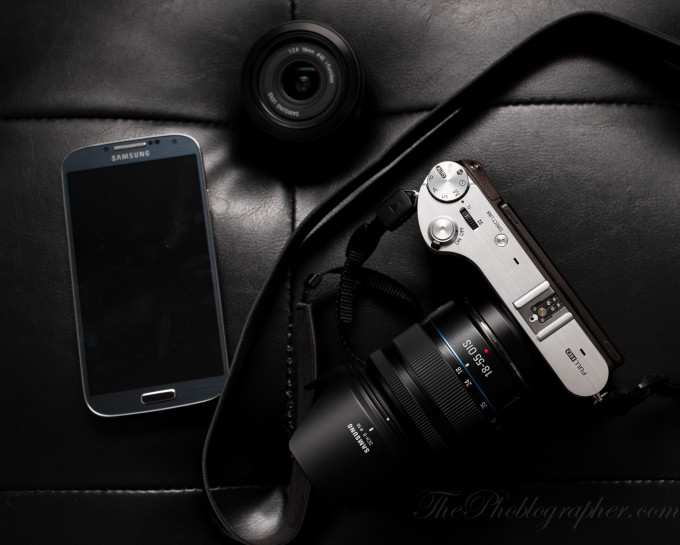
')
All glass for cameras are divided into two large groups: fixes and zoom lenses. In the former, respectively, the focal length does not change, in the latter, it varies. The first ones (usually) are lighter, contain less elements, allow designers to achieve good luminosity and sharper pictures. The latter are universal, can shoot in much wider conditions and just easier for everyday use. NX-glasses now have 5 (+3) fixes (16, 20, 30, 45 (+ 2D / 3D), 85 mm + 60 mm macro glass + 10 mm fish) and 5 zooms: shirik 12-24 mm, whale 20–50 mm, whale 18–55 mm, superzoom 18–200 mm, tele-zoom 50–200 mm. I saw some of them and touched them personally, I just read some reviews about some, but I will try to tell you in detail about each.
Theory
The name of each Samsung NX lens is assigned a specific set of additional letters. In order not to google, which means all sorts of ED, SSA, OIS and other letters, I will immediately give a decryption of these abbreviations.
ED (Extra-Low Dispersion) - A lens that contains one (or several) lenses made from materials with ultra-low light dispersion. Reduces the amount of chromatic aberration.
SSA (Super Sonic Actuator) - The lens is equipped with a silent autofocus motor based on an ultrasonic drive. Allows autofocus system to work faster and more accurately.
OIS (Optical Image Stabilization) - Optical Stabilization System. Objective lenses have a special “gimbal” that is controlled by electronics and reduces the effect of shaking on frame quality. Allows you to shoot at a slower shutter speed and / or in difficult conditions.
I, II, III, IV (1, 2, 3, 4) - Roman numerals indicate the generation to which this or that subsystem belongs (the more the better) or the generation of the lens itself.
Marking focal length and aperture, I think, should not cause anyone problems.
All NX-series lenses have an indirect autofocus drive (the focus ring is not directly related to the mechanization of glass, but is a kind of control that gives a signal to “manually” move the lenses using the built-in autofocus motor. A similar solution improved two things at once: remove the complicated (and expensive construction) hybrid drive, allowing simultaneous use of both focusing modes, and using the focus ring as another control for the general functions of the camera (via i- Fn (which is also present on all lenses of the NX-series).
Practice: fixes
The advantages of fixed optics are often difficult to argue. Picture quality, the ability to work with a large (open) aperture (up to 1.2 on commercial models and up to 0.7 on the rarest Carl Zeiss Planar 50mm f / 0.7, which was made specifically for shooting the dark side of the moon). Only one minus - constant focal length. Framing is carried out either after the fact, or by moving the camera relative to the subject of shooting (or changing the lens to a fix with a different focal length). In some cases, such restrictions sacrifice the quality of personnel, in some - the versatility and flexibility of the zoom is more important than the possibilities of fixes.
10mm f / 3.5 Fisheye
The fisheye is a specific lens.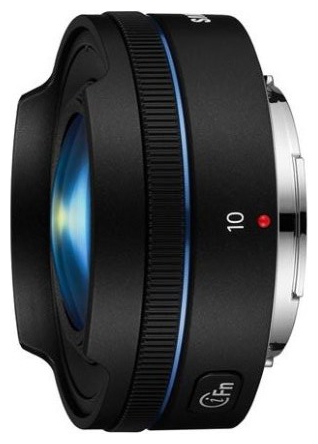
It has a thousand advantages, but they all break about extremely limited conditions for using this glass: taking landscapes (especially urban), architectural ensembles, artistic photos (with a clear understanding of what this lens is for and what result you will get) is always you are welcome. But for everyday shooting or as a universal, this lens is not enough, however, it was not created for that.
The characteristics of a 10 mm loup eyes are as follows:
Diaphragm
F3.5 (minimum - F22), The number of petals: 7, rounded contour
Minimum focal length
0.09m
Increase
~ 0.22X
Viewing angle
180 °
The number of groups of elements
7 elements in 5 groups
Filter diameter
unsupported
Length x Outside diameter
26.3mm x 58.8mm
Weight
73g
To be honest, I liked this glass much more than the 16mm F / 2.4 I experienced (albeit briefly). His creative potential is higher, the fish-eye effect makes it possible to shoot what the ordinary shirik cannot convey, and the distortions ... well, there's no way out of them.
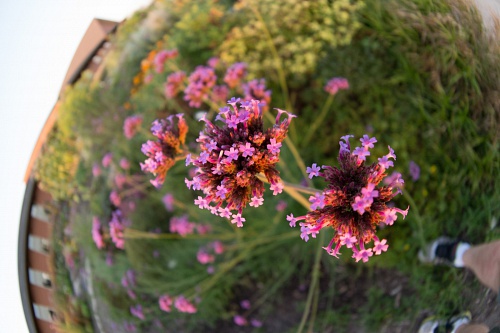
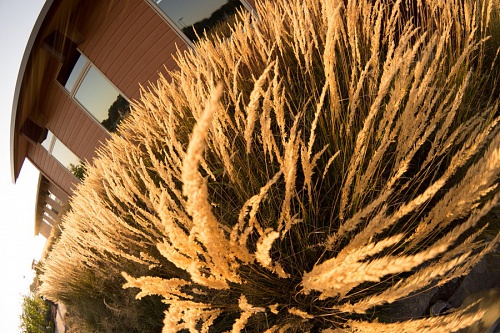
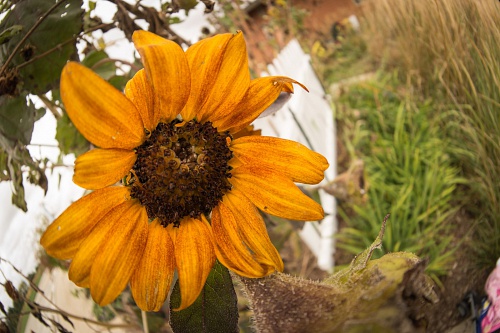
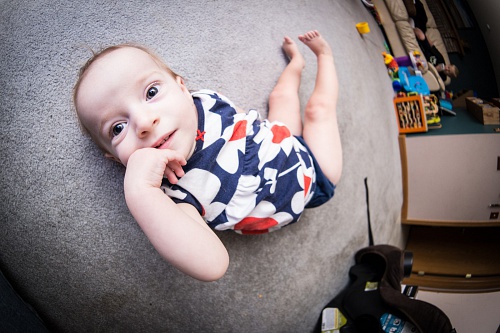

By combining the ability of the camera to take shots with an exposure (automatic bracketing for mixing in HDR) and the capabilities of the fish itself, you can get wonderful evening (and not only evening) photos.
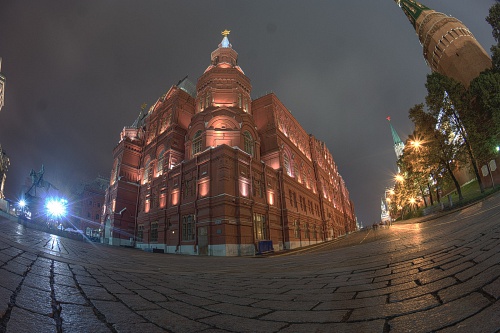
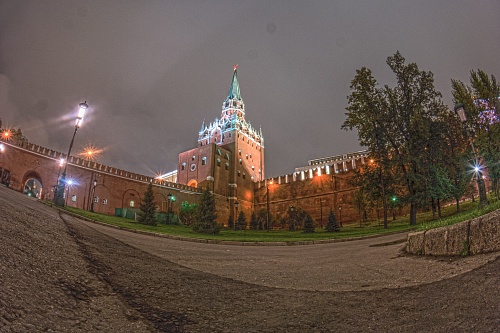
Yes, and just filming is a pleasure.
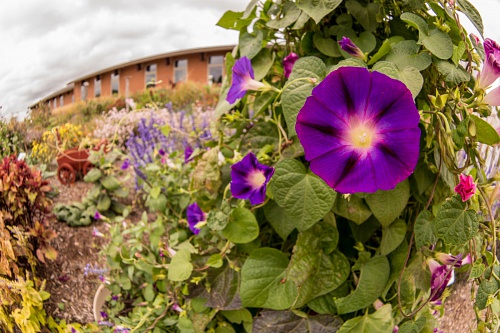
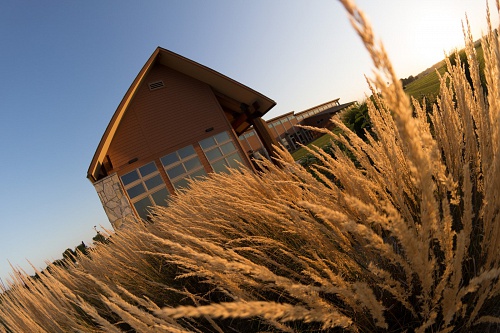

I think about vignetting, resolution and distortion in this case is meaningless. Shoot at aperture 8 and everything will be OK. ;)
Average price on Yandex market: 13,740 rubles.
16mm f / 2.4
Sixteen millimeter “pancake” - a small and convenient wide-angle for shooting landscapes and urban scenes. It weighs a little, the focal length given is 24.6 mm, the viewing angle, of course, does not reach the fisheye, but does not introduce such a number of distortions into the picture.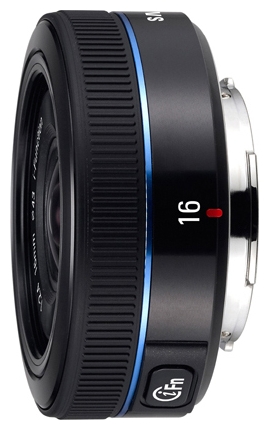
Characteristics are as follows:
Diaphragm
F2.4 (minimum - F22), The number of petals: 7, rounded contour
Minimum focal length
0.18m
Increase
~ 0.12X
Viewing angle
82.6 °
The number of groups of elements
7 elements in 6 groups (2 Aspherical lenses)
Filter diameter
43mm
Length x Outside diameter
24mm x 61.5mm
Weight
72g
In the hands of 16 mm did not hold, but we have the Internet, which means photos and reviews of such glass:
The Samsung 16mm f2.4 is a design and functionality. Firstly noted, it’s a camera package quite small.Foreign testers characterize the lens as “not bad”, praise for picture quality, clarity, pleasant bokeh, tolerable geometric distortions, which are caused by the very nature of the wide-angle lens, some color distortions (which, however, are easily removed during post-processing).





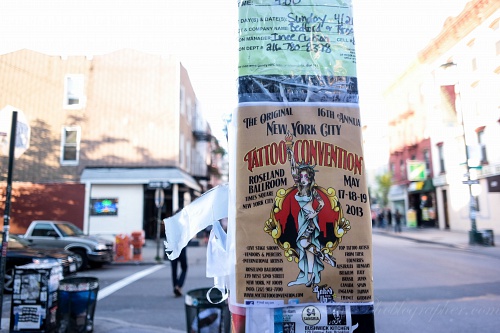

Average price on Yandex market: 8 990 rub.
20mm f / 2.8
The same weight, more focal length, less distortion, less elements, the same price.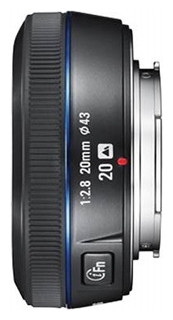
Diaphragm
F2.8 (minimum - F22), The number of petals: 7, rounded contour
Minimum focal length
0.17m
Increase
~ 0.18X
Viewing angle
70.2 °
The number of groups of elements
6 elements in 4 groups (1 Aspherical lens)
Filter diameter
40.5mm
Length x Outside diameter
24.5mm x 62.2mm
Weight
72g
I would not consider 20 mm as a competitor to 16 mm glass. In fact, these are two very close to each other lens, differing constructive. 20 mm easier and more reliable, 16 mm allows you to look at the world wider.
Average price on Yandex market: 8 990 rub.
30mm f / 2.0
Extremely popular focal length of 30-35 mm, which is in demand both on full-frame cameras and on crop matrices.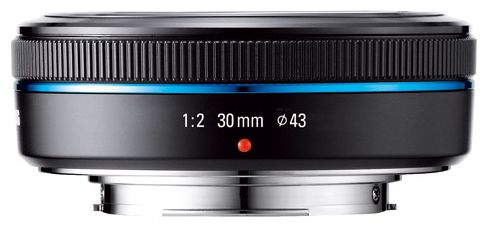
The characteristics of the lens are as follows:
Diaphragm
F2.0 (minimum - F22), The number of petals: 7, rounded contour
Minimum focal length
0.17m
Increase
~ 0.20X
Viewing angle
50.2 °
The number of groups of elements
5 elements in 5 groups
Filter diameter
43mm
Length x Outside diameter
21.5mm x 61.5mm
Weight
85g
Equivalent focal length of 46 mm allows you to successfully use this lens in both portrait and subject photography, and landscape art is still available to him. The combination of a maximum f / 2.0 aperture with a short working segment allows you to get great shots in low light conditions, and the price of this lens is lower than that of 16/20 mm counterparts, which makes it a good “universal” fix in a couple of whale zoom.
Foreign resources praise the lens for good performance (especially taking into account the combination of the results obtained with the price of the specimen in question). Vignetting at the level of 1EV-stop at the maximum open aperture. Resolution - from ~ 3200 lines to the height of the matrix in the center of the frame (max) at F / 4.0, to ~ 2000 in the corners at the maximum open aperture. Chromatic aberrations are called “minor” or “practically absent.”
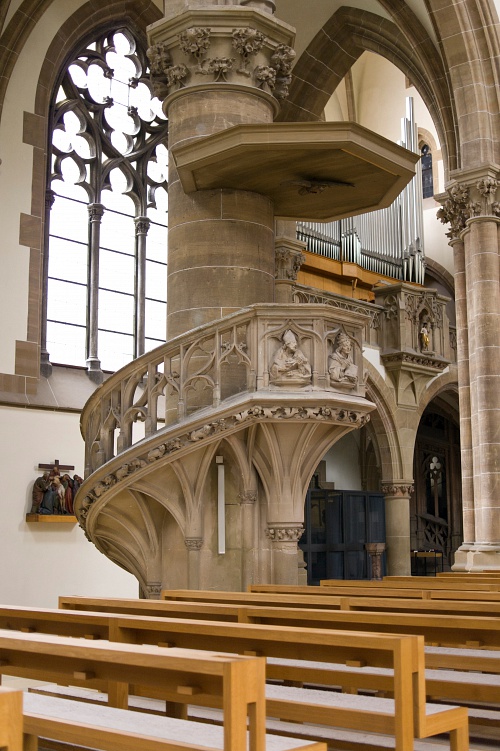


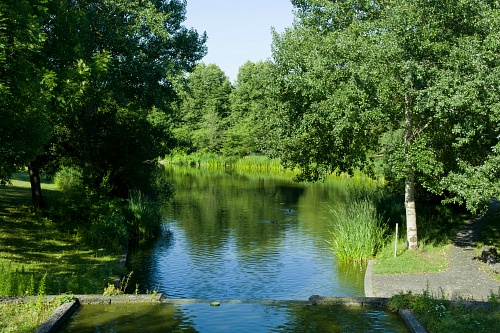

Average price on Yandex market: 7,890 rubles.
45mm f / 1.8 2D / 3D
Unusual portrait painter with 3D shooting function.
About the three-dimensionality a little later, but for now - the main characteristics:
Diaphragm
F1.8 (minimum - F22), Number of petals: 7, rounded contour
Minimum focal length
0.45m
Increase
~ 0.13X
Viewing angle
34.7 °
The number of groups of elements
7 elements in 6 groups
Filter diameter
43mm
Length x Outside diameter
44.5mm x 62mm
Weight
115g
Unusually “thick” and long for fixing with such a focal length (due to the built-in system for obtaining stereo images), the lens received quite good marks in the foreign press for being able to shoot both in 2D and in 3D modes, but in my opinion , somewhat suffers in both, because of its universality.
In normal mode, the glass produces good frames: sharp, with good boke, acceptable distortion, and without brightly pronounced chromatite. In stereo mode, the camera shoots only in JPEG, the aperture is fixed at F / 6.0 position (another stop is actually lost due to the “half” exposure of the frame), and overall the frames are average. Unfortunately, the video in a 3D camera with this lens can not shoot, and few people will be able to manually reduce 2 JPEG-pictures or view an MPO file on a TV. So “for the invention - five, but the credit is not good”, with the only exception that it is not here and does not smell. Just look at the footage:





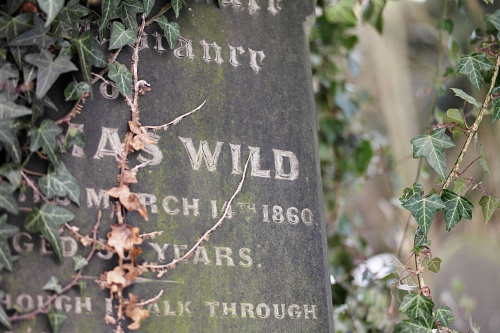

Not bad? With the rest of the photo-characteristics, he is also good: vignetting a maximum of ⅓ - ½ of the foot on the most open diaphragm, it is worthwhile to squeeze it even a little, and it becomes just imperceptible, the camera JPEG does not suffer from distortions, but the SRW file can always be restored in the editor . The resolution is about 2500 lines in the center of the frame and about 1500 at the edges (which, given the “portrait” orientation of this lens, is quite decent performance).
3D shooting works as follows: inside the lens a special “shutter” is lowered, which divides the image into two half-frames. The camera sequentially exposes the “left” part, then the “right” part, after which it performs some magic calculations, and at the output we get a stereo pair of two JPEGs.
The main disadvantages of this lens are price and weight. I really hope that Samsung will release a cheaper analog without 3D; sure that he will enjoy much greater demand.
Average price on Yandex market: 14,449 rubles.
60mm f / 2.8 Macro ED OIS SSA
One of the best fixes in the Samsung Optics Park (and one of the most popular).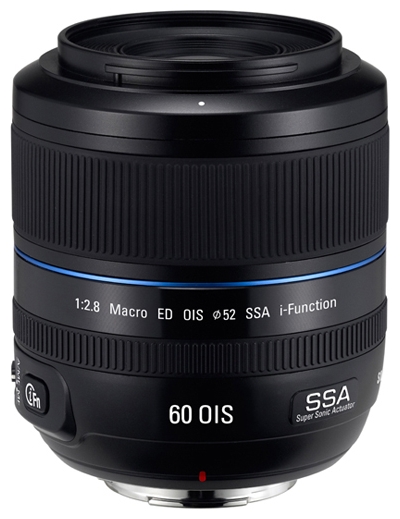
Ultra-fast autofocus, stabilizer, increasing the allowable shutter speed by three feet, the ability to shoot both excellent portraits (and the subject), and macro photos with a huge depth of field and all this for very reasonable money.
The characteristics of the lens are as follows:
Diaphragm
F2.8 (minimum - F32), The number of petals: 7, rounded contour
Minimum focal length
0.187m
Increase
~ 1.0X
Viewing angle
26.4 °
The number of groups of elements
12 elements in 9 groups, (1 Aspherical lens, 1 Extra-low Dispersion-lens)
Filter diameter
52mm
Length x Outside diameter
84mm x 73.5mm
Weight
372g
Autofocus has two modes of operation - limited (focusing at distances from 50 centimeters to infinity) and full (focusing in the entire working range, from 18 centimeters to infinity). In the first case, we get an ultra-fast lens at distances slightly exceeding the “standard” portrait 50 mm (80-85 mm for 35 mm): easy and convenient focusing with the possibility of manual finishing, pleasant boke, stabilizer reducing the effect of exposure on the clarity of the picture . In the second case, you can take a picture of a butterfly, a beetle, a flower, or any other trifle you liked in good light with a strongly clamped diaphragm and get a great frame in quality and depth of field.

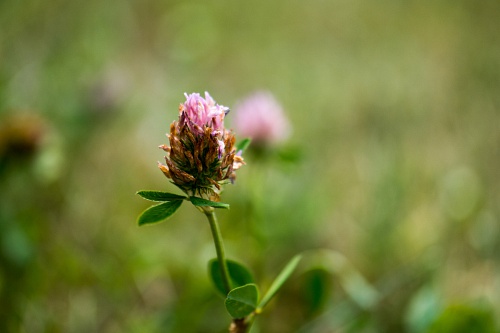

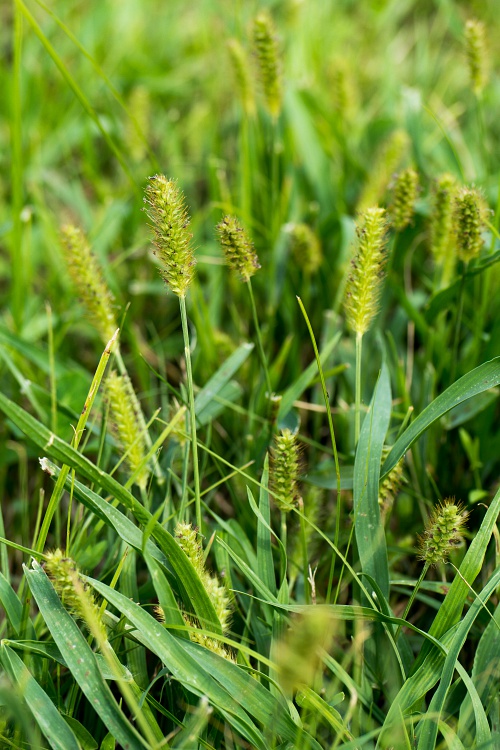
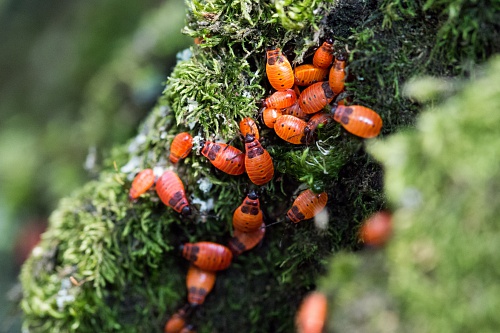

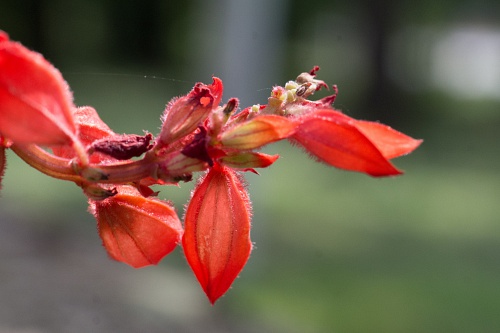
The maximum frame resolution is achieved at aperture F / 5.6 (and is kept at a fairly decent level to the aperture value F / 11 and at an acceptable level at the aperture value F / 16). The maximum resolution is 3020 lines, in the corners the value drops to 2330 lines (to the height of the matrix). The result is more than decent. With an F / 11 aperture, the resolution floats between 2,780 and 2,500 lines, which is also worthy of results for a lens with a price significantly lower than $ 1,000.
Chromatic aberrations do not exceed one pixel (and therefore are easily corrected), distortion and geometric distortions are almost zero (the result does not exceed the measurement error).
Vignetting is at the level of ~ 0.9 EV at the maximum aperture and only ~ 0.5 EV at the aperture of F / 4.0 (respectively, further down - even less).
Average price on Yandex market: 19,790 rubles.
85mm f / 1.4 ED SSA
Ultra-fast telephoto for hunting remote objects. :)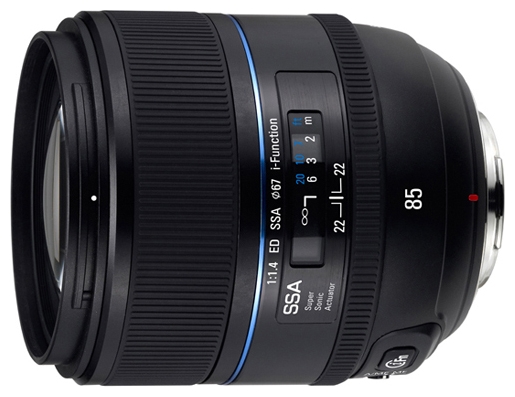
Fast and clear autofocus, large relative aperture of the diaphragm, moderate weight, ultralow lens to reduce chromatic aberrations. And here are the characteristics:
Diaphragm
F1.4 (minimum - F22), Number of petals: 7, rounded contour
Minimum focal length
0.82m
Increase
~ 0.13X
Viewing angle
18.8 °
The number of groups of elements
10 elements in 9 groups, (1 Aspherical lens, 1 Extra-low Dispersion-lens)
Filter diameter
67mm
Length x Outside diameter
92.2mm x 79mm
Weight
450g
Distortion, as is the case with the 60mm f / 2.8 Macro ED OIS SSA, is practically at the level of measurement error. Vignetting - from 0.9 EV with the aperture as wide as possible to almost imperceptible 0.28 EV at F / 4.0. The maximum resolution - 2898 lines is reached in the center of the frame with an aperture of F / 5.6 (with F / 4.0, the resolution differs slightly - 2989 lines, and the whole range from F / 2.0 to F / 8 in the center of the frame has no resolution problems, to be honest The edges and corners show a slightly worse result, but they do not suffer either - 2550 lines at F / 2.8 at the edges and corners, which is a very good result. Chromatic aberrations are approximately at the half-pixel level, at the extremely open or fully closed diaphragm look for characteristic defects in the frame.
European surveyors openly call the 85mm f / 1.4 ED SSA one of the best lenses in the Samsung lineup, and I would be happy to agree with them, but for the time being I didn’t use it myself. But we will wait for nothing: maybe test samples will be delivered to our remote places in the near future. ;)
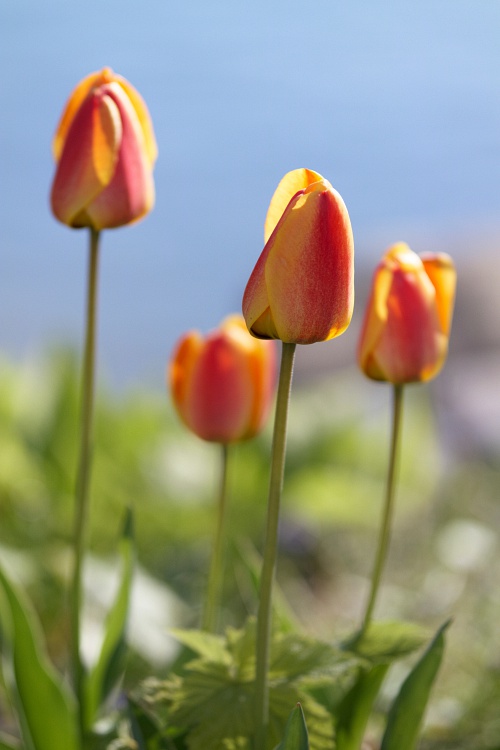



Average price on Yandex market: 22 990 rubles.
Fixed summary
In the table below, I collected all the fixes, their pros, cons and comments to them.
| FR | pros | Minuses | Comment |
| ten | Sharp enough, interesting shots, excellent work with hyperfocal distance; | Price (more than 16 mm), non-universality; | It makes sense to take only if you understand what it is and why you need it. |
| sixteen | A good wide-angle, quite sharp, versatile, lightweight, compact, reasonable price; | On Fisheye frames are more interesting; | Great landscape lens. |
| 20 | see 16 mm Ultrawide; | It is not clear why it is needed if there are 16 mm and 30 mm; | Less distortion is probably more suitable for urban photography. |
| thirty | One of the best fixes "for every day", the price is good; | As a full-time portrait camera does not fit - too small focal length. | In spite of the “minus”, in a case you can take off a pleasant portrait, if you wish. |
| 45 | Pleasant, quick portrait; | 3D mode is unsuitable for use, the price bites; | I would like it, but without 3D and with a reasonable price tag. |
| 60 | A great addition to the 30 mm lens: sharp, without distortion, with very fast autofocus, optical stabilizer and the ability to shoot macro; | Heavy, obviously not related to the budget of the glass; | Mastkhev, if you think you will use it. |
| 85 | All the same as in the 60 mm except for macro photography. | Heavy, the price bites even stronger than the 60 mm. | Just a great telefiks. |
If I chose a set of fixes, I would probably take 10-30-60 or 10-30-85. They perfectly cover the whole range of interesting focal lengths and my yuzkeys: shooting in the city, universal glass for all occasions (just take with me, although here I would prefer a zoom) and portraits / subject.
That's all: talk about zooms next week. Stay tuned!
Source: https://habr.com/ru/post/202838/
All Articles